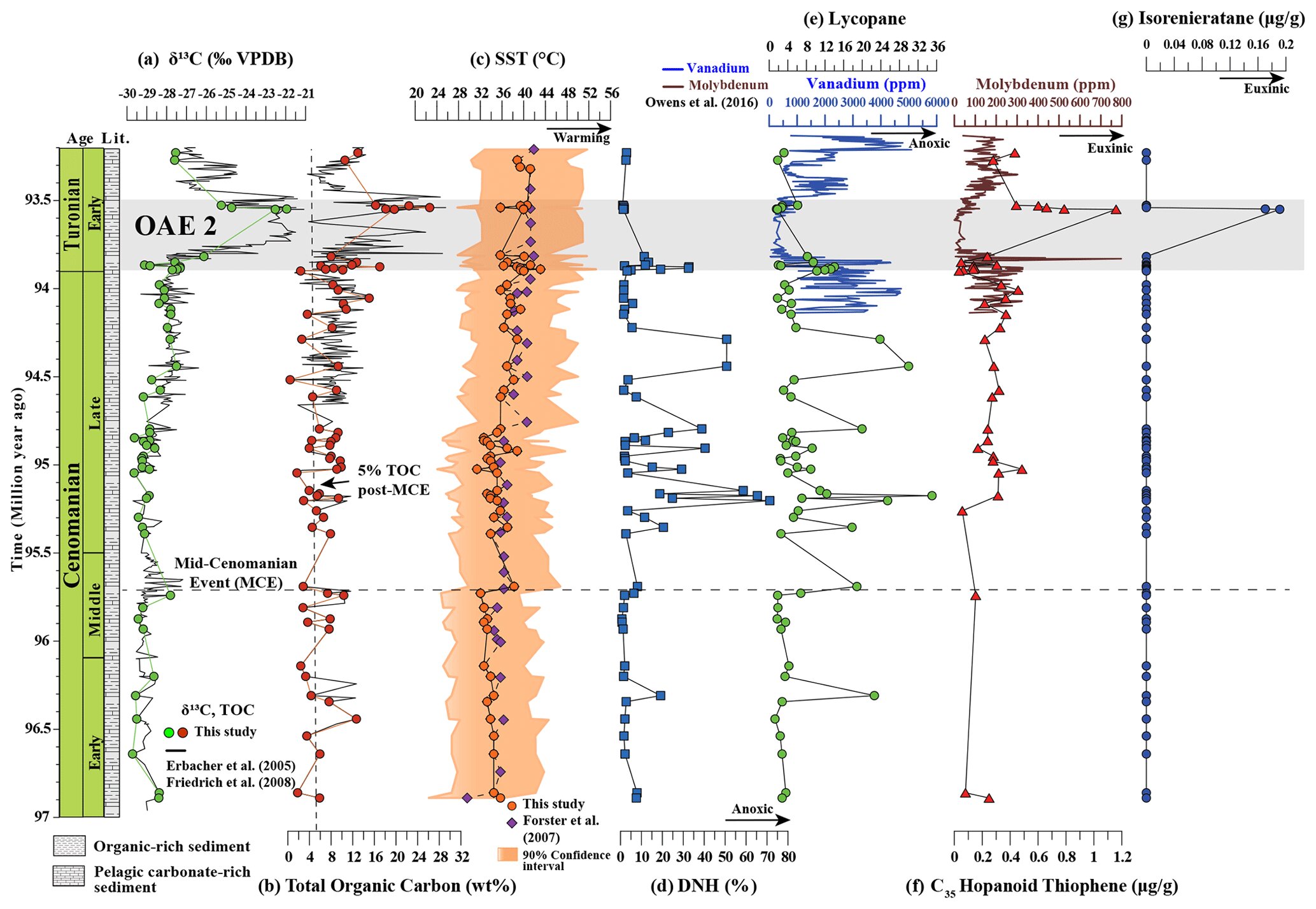Marine anoxia occurs when the oceans are severely lacking in dissolved oxygen, posing a threat to the organisms living in them. One significant event, Oceanic Anoxic Event 2 (OAE2), took place approximately 93.5 million years ago during the Upper Cretaceous period and lasted for up to 700,000 years.
The specific causes of OAE2 are still a topic of debate, but the leading theory suggests that volcanism from the Caribbean Large Igneous Province and High Arctic Large Igneous Province played a major role by increasing atmospheric carbon dioxide and warming the planet.
A warmer planet leads to increased weathering of land, with the resulting material being transported to the oceans by fluvial processes, providing essential nutrients to primary producers in the surface ocean. While enhanced primary productivity generates more oxygen, the trophic food chains ultimately consume more of this oxygen in their metabolic processes.
Combined with the reduced solubility of oxygen in warmer oceans, this leads to widespread deoxygenation of Earth’s marine realm, which is the focus of a new study published in Climates of the Past.
Dr. Mohd Al Farid Abraham, from Universiti Malaysia Sabah, Malaysia, and his colleagues examined deep-sea sediments drilled during an explorative expedition of Demerara Rise, located at a latitude of approximately 5°N during the Cenomanian period, in the equatorial North Atlantic Ocean.
2024-01-31 01:41:03
Post from phys.org
